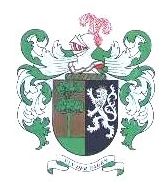Willem van der Haegen
| Willem van der Haegen | |
|---|---|
| Guilherme da Silveira | |

The coat of arms used by the Silveira Family, descendants of Willem van der Haegen.
|
|
| Personal details | |
| Born | 1430 West Flanders, Burgundian Netherlands |
| Died | 1510 Topo, São Jorge, Azores |
| Resting place | Solar dos Tiagos |
Willem van der Haegen (1430 – 1510), transliterated to the Portuguese as Guilherme da Silveira, was a Flemish nobleman, explorer.. Adopting the Portuguese transliteration of his name, Silveira was a pioneer colonizer in Azorean history and his descendants formed part of the original Azorean nobility.
As part of his inheritance, King Edward of Portugal bequeathed the islands of the Azores to his brother, the Infante D. Henriques (Henry the Navigator), in 1433. This was subsequently left to Henry's nephew and adopted son, Infante D. Fernando, in addition to Henry's title as Grand Master of the Order of Christ. A grant was made by the Infante to his aunt, D. Isabella of Portugal (Edward and Henry's sister), the Duchess of Burgandy, in the Low Countries. For many of the Flems who were recuperating from the Hundred Years' War, this grant offered an opportunity of alleviating their suffering.
Van der Haegen, a wealthy entrepreneur, was invited by Josse van Huerter (for four-years Captain-General of the island of Faial) to settle the island with him, in an archipelago that was becoming known as a New Flanders (or the Flemish Islands). Consequently, in 1470, with his wife Margarida da Zambuja and at his own expense, he offloaded two ships carrying his extended family, slaves and professionals of various services, to begin what was characterised as a "second-wave" of immigration to the island (the first having been pioneered by Van Huerter in the 1460s). Van der Haegen, by his virtues and distinguished personality, became popular on the island. But, sensing a level of bad faith on the part of Huerter and a growing rivalry, he abandoned his holdings on Faial, to settle in Quatro Ribeiras, on the island of Terceira. He begins to cultivate wheat and gather woad plants for export (specifically Isatis tinctoria which was also produced in the Picardy and Normandy Regions of France until that time). These plants, along with other species, were essential in the production of many of the dyes popular with mercantile classes. Most islands in the archipelago were populated, and the plants commercialized by the landed gentry for their exportable nature; early settlements were founded on the basis of agricultural and dye-based exports, such as woad. Van der Haegen's colonies were no exception.
...
Wikipedia
